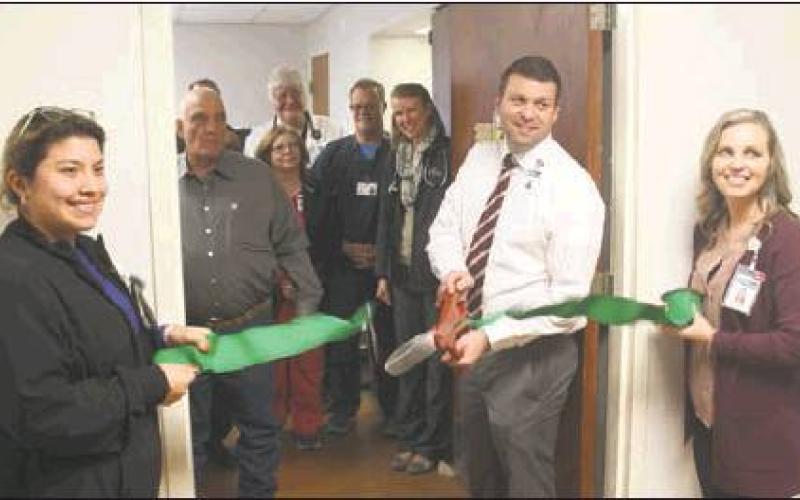Stephens Memorial Hospital unveils nuclear lab
The Stephens County Memorial Hospital unveiled their new Nuclear Medicine Lab Thursday afternoon with a couple representatives on hand to explain the benefits of the technology.
Nuclear Medicine Specialist Ambar Paranjape and Regional Vice President James Avery for Heart Care answered questions for those stopping by to see the new facility. Paranjape said the differences between this and other tests, such as an x-ray, are stark.
“When you look at an x-ray or CT scan, what you’re seeing is anatomy and morphology,” Paranjape said. “When you look at a nuclear image, you’re seeing function. So, you’re not really seeing anatomy, you’re seeing how the anatomy is working.”
He compared it to a blueprint of a building. The blueprint alone represents the anatomy of the building, but that alone does not tell you the story of what types of actions and functions go on inside of it. In terms of nuclear medicine, it would be equivalent to having everyone wear a light on their head and taking a time-lapse photo of where everyone has gone.
This type of technology will allow a variety of things, such as doctors to view a heart beating in real-time. It also provides data on the heart, such as how much blood it can hold. The scans allow for the viewing of the heart from numerous angles to see how the heart is functioning, or what damage there may be.
Paranjape said the process to bring the nuclear lab to Stephens County took about a month of legwork. There were some licenses that needed to be approved, as well as get doctors on board. But he added they have been seeing patience in the lab for about a month now.
Prior to bringing it to Stephens County, patients would have to travel to Dallas, Fort Worth or Abilene for this kind of test.
“One of the primary goals of our company is to provide these high-level technologies to what we call critical access, so that patients don’t have to drive two hours for their appointment,” Paranjape said.
Comparing this to other tests, such as an MRI or an x-ray, the time to conduct the scan can vary, but it does depend on the type of test being done. Nuclear medicine can involve several types of scans, such as a bone scan, which takes about 20 minutes, or cardiac test, which can take up to two hours. Other tests, such as a gastric-emptying study, which looks at how stomach contents empty out, can take up to four hours. Paranjape said they try to keep their scans to about an hour.
Paranjape said this technology has been around for about 60 years. And the tech is much more accessible for certain individuals who may have complications or allergic reactions from other tests. These imaging systems do not lead to any allergic reactions or complications, and any effects from the test typically die out within 24 hours.
The Administration office for the Stephens County Memorial Hospital could not be reached in time for publication. For more information on nuclear testing, contact the Stephens County Memorial Hospital at 254-559-2241.
- Log in to post comments


